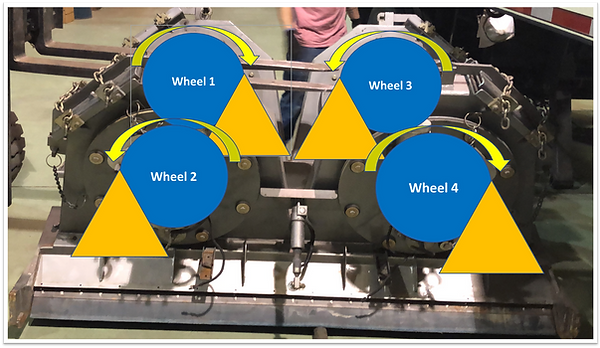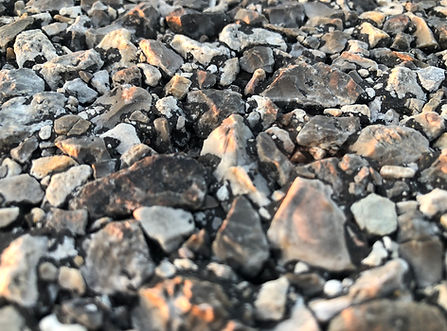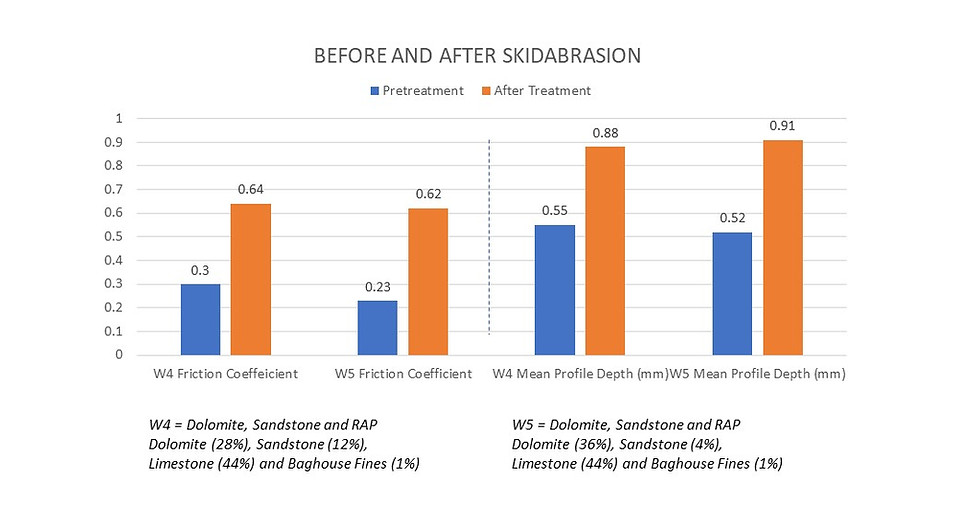
SKIDABRADER
TECHNOLOGY
Wet weather accidents have been dramatically reduced or, in some cases, eliminated by modifying asphalt and concrete pavement surfaces with the Skidabrader™, which uses our unique technology of high-velocity bidirectional abrading and retexturizing. This system was designed for the safety and beautification of structurally sound highways, runways, bridges, and other large traffic-bearing surfaces.

SKIDABRADER UNIQUE PATENTED PROCESS
Skidabrading incorporates using a high-speed wheel to propel steel shot in a controlled pattern towards a substrate. The steel shot's high-speed impact abrades and removes contaminants while etching the surface. The steel shot rebounds into an air wash separator, where it is cleaned and returned to the blast wheel for reuse. The contaminants are collected within a containment system for later disposal.
CLOSE UP OF WORKING ROTATION

SKIDABRADER™ PATENTED WHEEL DESIGN
Our Skidabrader wheel design allows for infinite control and feathering of the blast pattern. These unique controls allow for velocity and abrasive flow changes to achieve variable surface outcomes.


Macrotexture is relatively stable and can be measured by traveling at normal speeds using laser profile meters. This is recorded as SMTD [Sensor Measured Texture Depth].
Microtexture
the texture of the stone

Macrotexture
overall the texture of the road
MACRO AND MICRO TEXTURING
Aggregate Characteristics
Surface Characteristics
Microtexture
Macrotexture
Megatexture
Roughness/Unevenness
X
X
X
FRICTION
EXTERNAL NOISE
INTERNAL NOISE
SPRAY/SPLASH
ROLLING RESISTANCE
TIRE WEAR
TIRE WEAR/DAMAGE
The abrasion process targets and alters the desired pavement's macrotexture. Macrotexture is the primary pavement characteristic associated with the Microtexture. It is effectively the average depth of the gaps or voids between the coarse aggregate particles on the surface.

